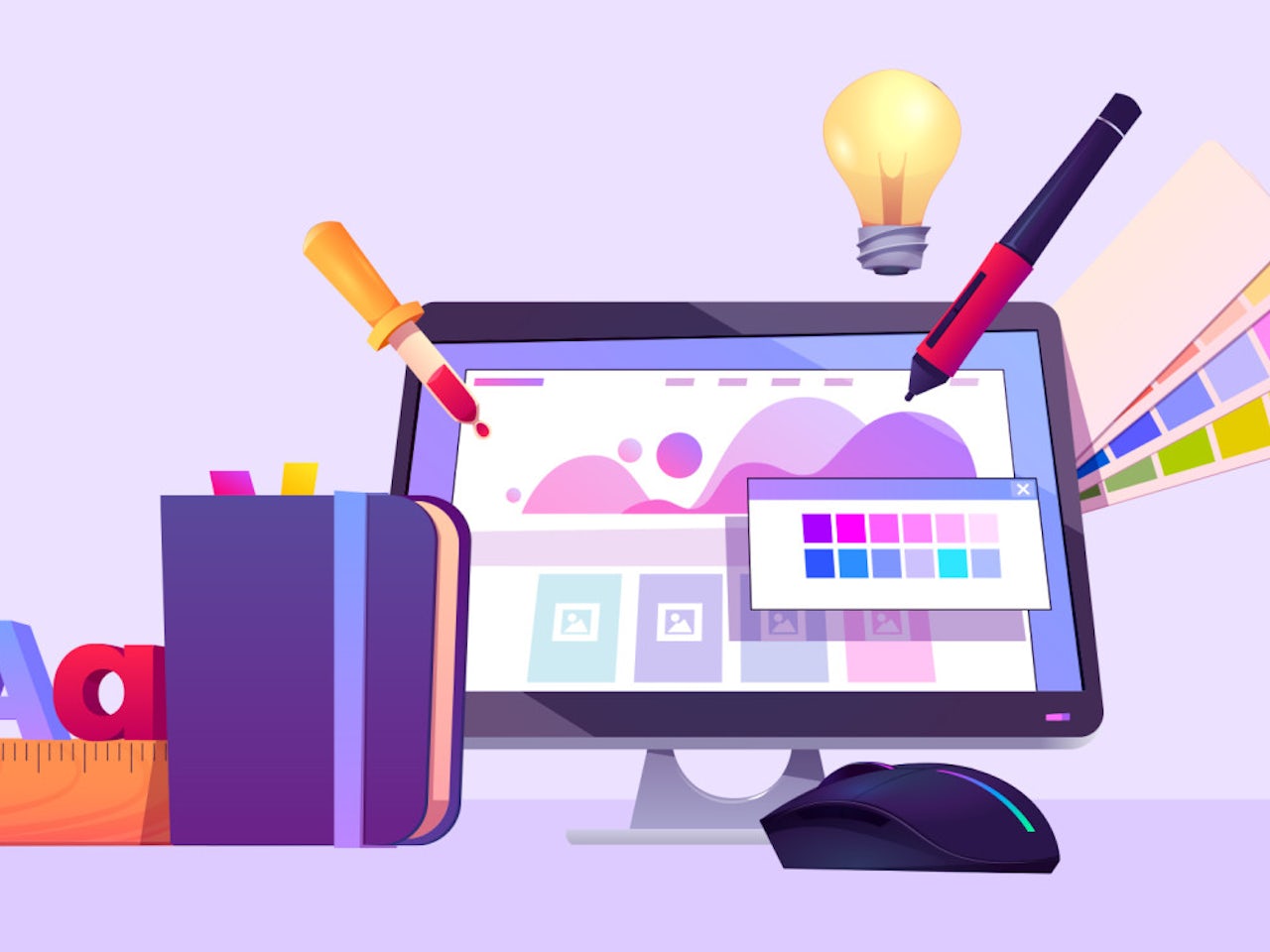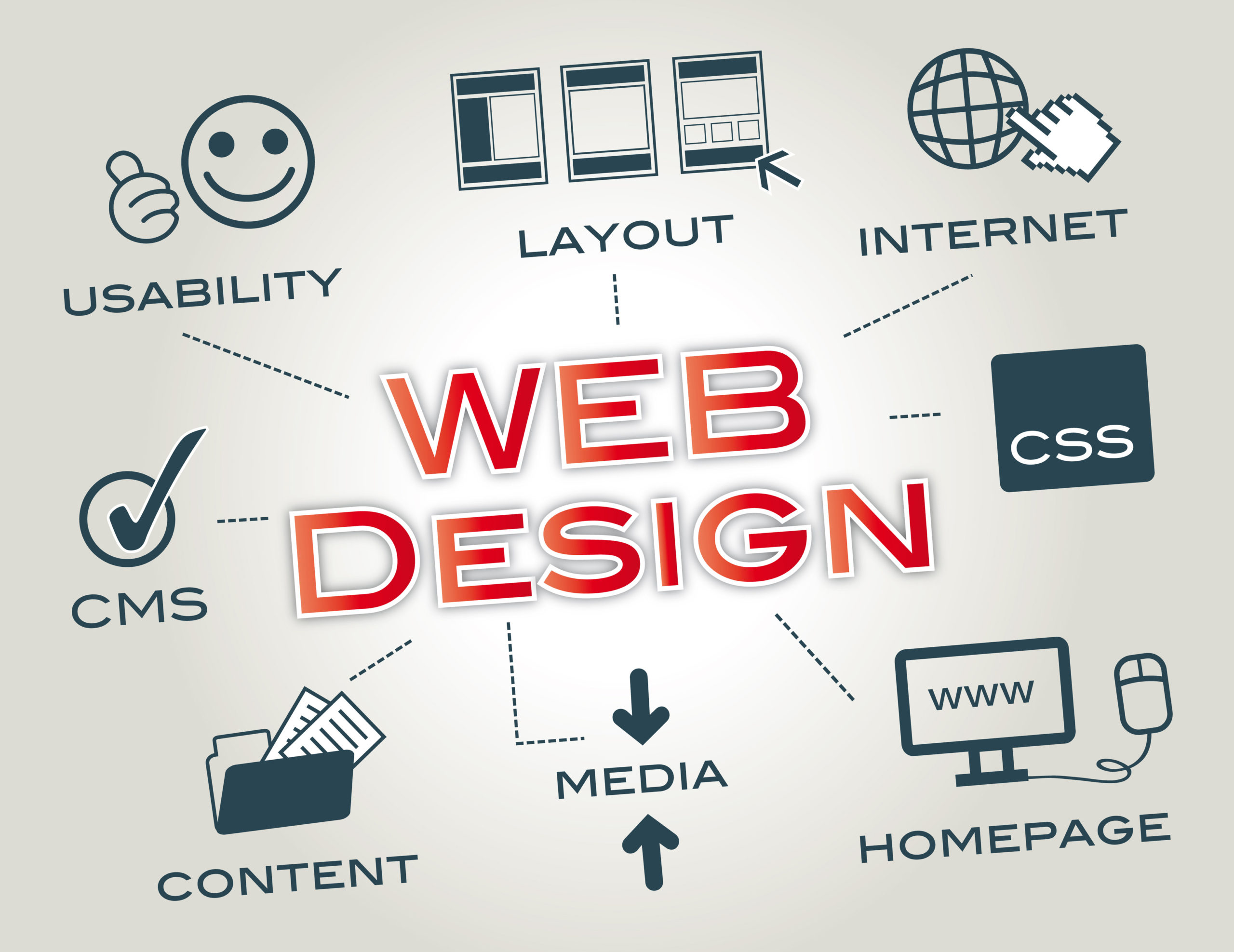Proven insights on creating engaging visuals from an agency for web design
Wiki Article
Checking Out Imaginative Fads in Web Design for Modern Services
The landscape of web design is consistently developing, showing the dynamic requirements of contemporary services. Recent trends highlight a choice for minimalism, bold typography, and interesting interactivity. Firms progressively focus on user experience via mobile-first concepts and tailored content. In addition, a focus on sustainability is obtaining traction. Understanding these patterns is vital for services aiming to stand apart in a congested marketplace. What implications do these shifts hold for the future of digital engagement?Welcoming Bold Typography
Strong typography has emerged as a specifying component in contemporary web design, capturing attention and communicating messages with striking clearness. This trend focuses on aesthetically impactful text that improves user engagement and brand identification. Developers commonly make use of distinct typefaces and oversized fonts to develop a pecking order, assisting visitors through web content effortlessly.
The strategic use vibrant typography permits effective storytelling, enabling brand names to interact their worths succinctly. It serves not just visual objectives but additionally practical ones, as it improves readability throughout gadgets and display sizes.
As web sites compete for user interest, bold typography attracts attention in a saturated digital landscape. Its versatility makes it possible for designers to trying out contrasting formats and colors, additionally amplifying its efficiency. Ultimately, embracing strong typography represents a change in the direction of even more expressive and communicative web design, cultivating a deeper link between brands and their audiences.
The Increase of Minimalist Style
As digital atmospheres become progressively cluttered, the rise of minimalist layout supplies a renewing option that prioritizes simplicity and performance. This layout philosophy strips away unneeded aspects, allowing web content to take center stage. By concentrating on tidy lines, sufficient white space, and a minimal color palette, minimalist design enhances user experience and improves navigating.Services adopting this pattern goal to convey their brand name message plainly and properly, cultivating a feeling of calmness and clearness. The lack of disturbances aids customers concentrate on important info, causing enhanced interaction and conversion prices. Additionally, minimal layout straightens well with mobile-first strategies, ensuring that websites stay easily accessible and easy to use across various gadgets.
Ultimately, the rise of minimal layout shows a wider change towards focusing on user requirements and choices, making it a powerful tool for contemporary businesses looking to make a long lasting impact in the digital landscape.
Immersive Animations and Interactivity
While numerous internet developers welcome minimal appearances, one more engaging fad acquiring grip is using immersive animations and interactivity. This technique enhances user interaction by producing intriguing experiences that draw visitors right into the content. Designers employ dynamic aspects such as computer animated histories, scrolling results, and interactive infographics to connect complex ideas in an available manner.These computer animations not just offer aesthetic passion however also overview individuals with the navigation procedure, making communications extra instinctive. For example, float effects and computer animated shifts can encourage individuals to discover further, causing enhanced time spent on the website.
Moreover, this trend straightens with the more comprehensive activity towards storytelling in web design, where animations serve as narrative gadgets that share brand name messages effectively. By integrating immersive computer animations and interactivity, services can distinguish themselves in a congested online landscape, inevitably enhancing user satisfaction and brand commitment.
Mobile-First Style Principles
Mobile-first layout principles stress focusing on user experience by guaranteeing internet sites work flawlessly on smaller displays. This strategy includes responsive format strategies that adapt to different device sizes while keeping aesthetic honesty. In addition, it concentrates on touchscreen navigating style, enhancing use for mobile individuals.Focusing On User Experience
Just how can designers successfully focus on user experience in an increasingly mobile-centric world? Emphasizing mobile-first layout concepts is necessary, as customers primarily engage with web sites with mobile phones. This approach motivates designers to simplify material, ensuring it is easily obtainable and navigable on smaller sized displays. Key techniques include streamlining navigating, reducing load times, and using touch-friendly aspects that boost interactivity. Furthermore, focusing on clear typography and user-friendly designs can considerably enhance user complete satisfaction. Developers ought to continually gather user responses to fine-tune their techniques, adjusting to advancing user needs and choices. By focusing on these aspects, services can produce an interesting digital experience that promotes loyalty and drives conversions, eventually straightening with the expectations these days's mobile customers.Receptive Format Techniques
Designers accept responsive layout techniques to create adaptive and adaptable internet experiences that deal with various display sizes. This approach focuses on mobile-first layout principles, making certain peak capability on smaller sized tools before scaling up for bigger displays. By utilizing liquid grids, adaptable pictures, and media queries, developers can maintain a natural visual identification throughout all systems. This approach not just boosts user interaction but also improves online search engine positions, as mobile-friendly sites are preferred by search formulas. Additionally, receptive layouts permit services to reach a wider audience, fitting individuals on desktop computers, smart devices, and tablets alike. Overall, executing these strategies is essential for modern-day web design, guaranteeing that companies continue to be affordable in an ever-evolving digital landscape.Touchscreen Navigation Design
With the surge of mobile phones, touchscreen navigating has become a fundamental facet of web design. Developers are increasingly embracing mobile-first principles to improve user experience and involvement. Web Design Agency. Efficient touchscreen navigating web design company focuses on bigger switches and user-friendly motions, enabling individuals to connect conveniently with web content. This strategy minimizes disappointment and encourages expedition, as individuals can browse effortlessly with their fingers. Furthermore, integrating swipe gestures and faucet performance provides to the natural behaviors of mobile users. Responses systems, such as aesthetic hints and animations, improve usability even more by verifying activities. As touchscreens control user interactions, employing these design components not only straightens with modern expectations however likewise cultivates a much more satisfying and accessible searching experience for all customersIndividualized User Experiences
What makes an individual really feel truly engaged on a web site? The solution frequently exists in customized user experiences. By customizing web content and navigating to individual preferences, companies can produce a purposeful link with their target market. This customization can be accomplished via numerous methods, such as assessing user behavior, using cookies, and providing tailored recommendations based upon previous interactions.As an example, shopping platforms that recommend products based on searching background not only enhance user experience yet additionally enhance conversion rates. Furthermore, integrating vibrant content that adjusts to the user's area or time of day can even more enhance involvement.
In addition, personalized introductions or messages can make customers feel valued and understood. As modern services strive to stick out in an affordable electronic landscape, welcoming customized user experiences comes to be essential, fostering loyalty and motivating repeat check outs. Eventually, this technique transforms a typical internet site into an interactive system that resonates with its target market.
Sustainability in Web Design
As the electronic landscape remains to progress, the relevance of sustainability in web design has actually obtained considerable focus. Developers are increasingly aware of the environmental effect their creations can have, triggering a shift towards environment-friendly techniques (Website Design Agency). Lasting web design concentrates on optimizing web sites to decrease energy usage and carbon footprints. Techniques consist of using minimalistic style concepts, enhancing pictures, and employing efficient coding techniques to improve loading speedsAdditionally, the option of organizing suppliers plays a crucial duty; numerous designers are now choosing environment-friendly holding services powered by renewable power. By focusing on ease of access and straightforward navigating, lasting designs also satisfy a broader audience, improving functionality. This aware strategy not just appeals to environmentally-minded customers yet also adds to the overall long life and efficiency of sites. Inevitably, sustainability in web design mirrors an expanding trend towards responsible electronic techniques that straighten with modern-day organization worths.

Often Asked Questions
How Can I Pick the Right Color Pattern for My Internet site?
To choose the best color system for a site, one must think about the brand name's identification, target audience, and emotional impact. Making use of shade theory and screening mixes can improve user experience and visual charm substantially.What Are the most effective Devices for Prototyping Internet Styles?
The finest tools for prototyping website design consist of Figma, Sketch, Adobe XD, and InVision. These systems provide instinctive interfaces, cooperation functions, and considerable libraries, making them excellent for designers to develop and improve their concepts effectively.Exactly how Do I Gauge the Performance of My Web Design?
To gauge web design performance, one need to examine user interaction metrics, conversion rates, and functionality comments (Website Design Agency). A/B testing and heatmaps can additionally give insights into user habits, guiding required changes for improved performance and user experienceWhat Are Usual Web Design Blunders to Avoid?
Typical web design mistakes consist of cluttered formats, poor navigation, slow-moving loading times, absence of mobile optimization, poor comparison, and disregarding user comments. Staying clear of these mistakes improves user experience and boosts total effectiveness of the site.Exactly how Usually Should I Update My Web Site Layout?
A website design ought to be updated every 2 to 3 years, or sooner if significant modifications in branding or innovation happen. Normal updates maintain the website fresh, practical, and aligned with present user expectations.
Report this wiki page